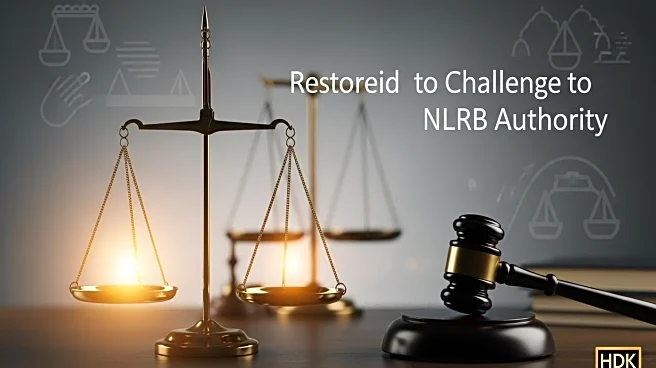What's Happening?
The U.S. Court of Appeals for the Fifth Circuit has issued a ruling that questions the constitutionality of the National Labor Relations Board's (NLRB) structure, potentially leading to a Supreme Court review. This decision is part of a broader set of rulings affecting employment law. The Fifth Circuit also upheld the Pregnant Workers Fairness Act (PWFA), reversing a lower court's preliminary injunction and requiring employers to provide reasonable accommodations for pregnancy-related conditions. Additionally, the current administration has rescinded President Biden's 2021 executive order on non-compete agreements, indicating a shift towards traditional competition reviews. Furthermore, a federal court has limited the Equal Employment Opportunity Commission's (EEOC) practice of issuing early right-to-sue notices in discrimination cases.
Why It's Important?
These rulings have significant implications for U.S. employment law and workforce management. The challenge to the NLRB's authority could alter the landscape of labor relations and union activities, affecting both employers and employees. The upholding of the PWFA strengthens protections for pregnant workers, ensuring they receive necessary accommodations, which could impact workplace policies and employer responsibilities. The reversal of the non-compete order may influence business practices and competition, potentially affecting employee mobility and corporate strategies. The limitation on the EEOC's right-to-sue policy could change the dynamics of discrimination claims, impacting how quickly and effectively claimants can pursue legal action.
What's Next?
The potential Supreme Court review of the NLRB's structure could lead to significant changes in labor law, depending on the outcome. Employers will need to adjust their policies to comply with the PWFA, ensuring accommodations for pregnant workers are in place. Businesses may need to reassess their strategies in light of the rescinded non-compete order, possibly leading to increased competition and changes in hiring practices. The EEOC may need to revise its procedures for issuing right-to-sue notices, which could affect the timeline and process for discrimination claims.
Beyond the Headlines
The constitutional challenge to the NLRB's structure raises questions about the balance of power between federal agencies and the judiciary, potentially influencing future legal interpretations of agency authority. The emphasis on pregnant worker protections reflects broader societal shifts towards inclusivity and support for working parents, which could lead to more comprehensive workplace reforms. The changes in non-compete and EEOC policies may prompt discussions on employee rights and corporate responsibilities, influencing public policy and business ethics.













